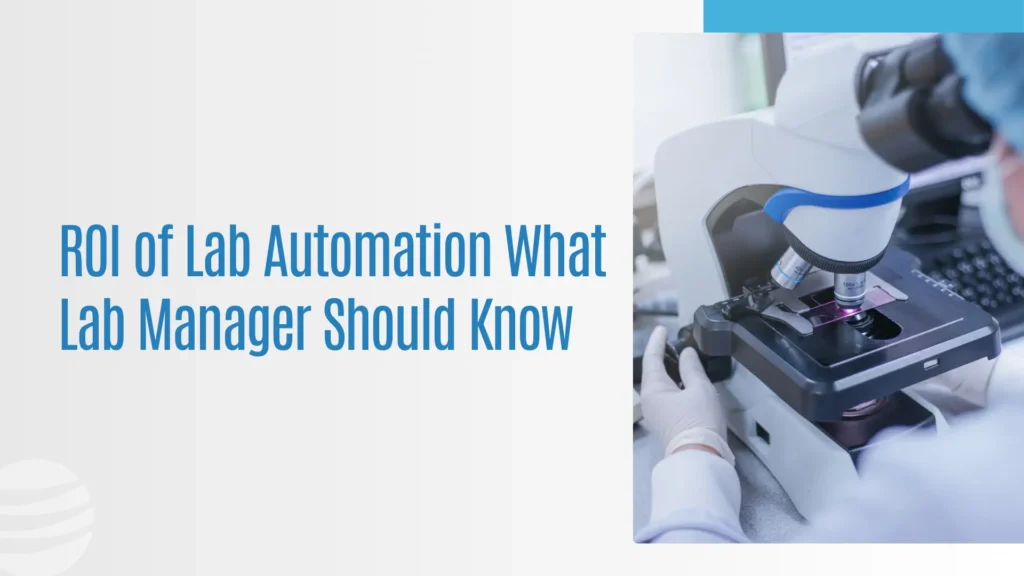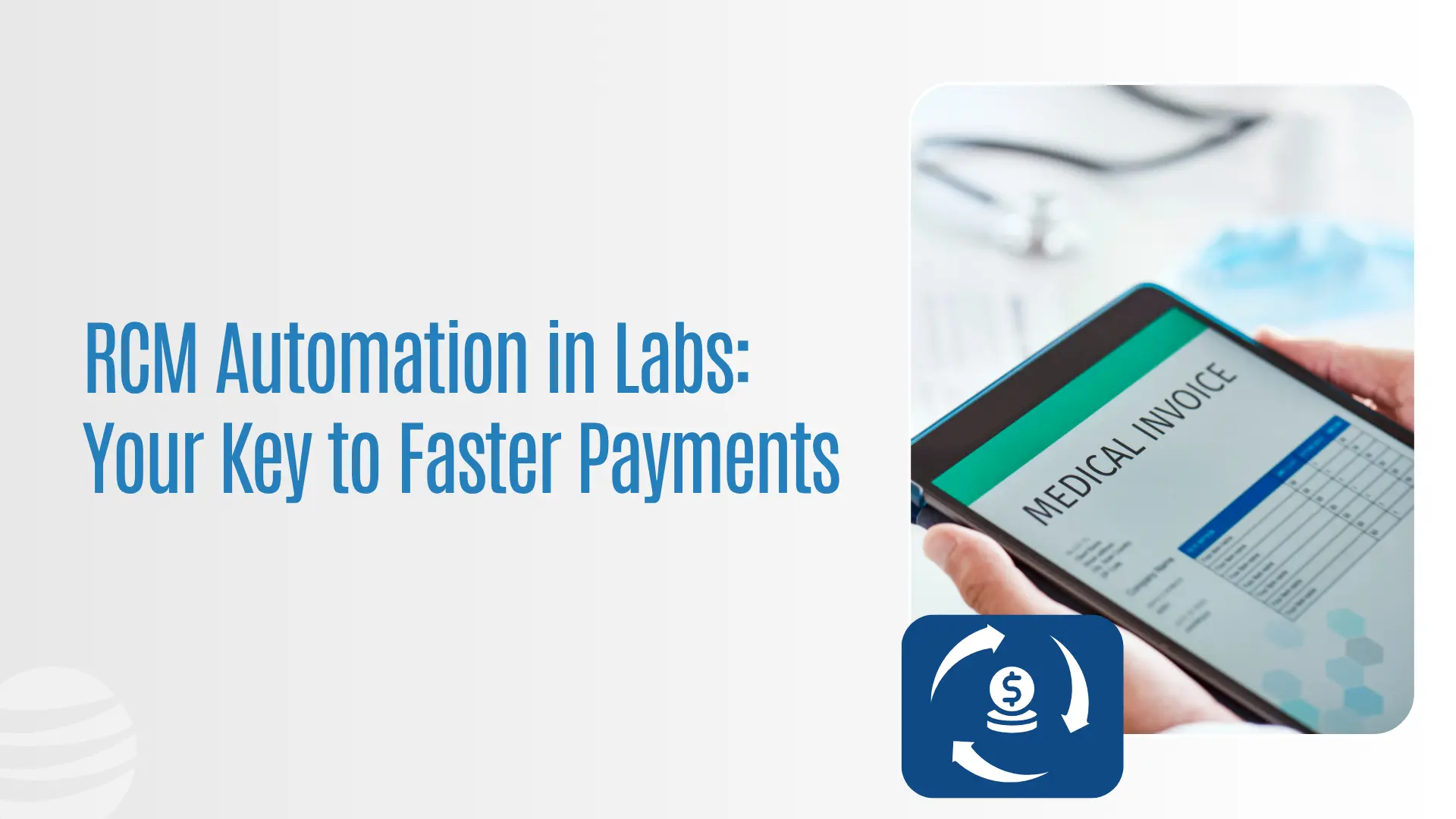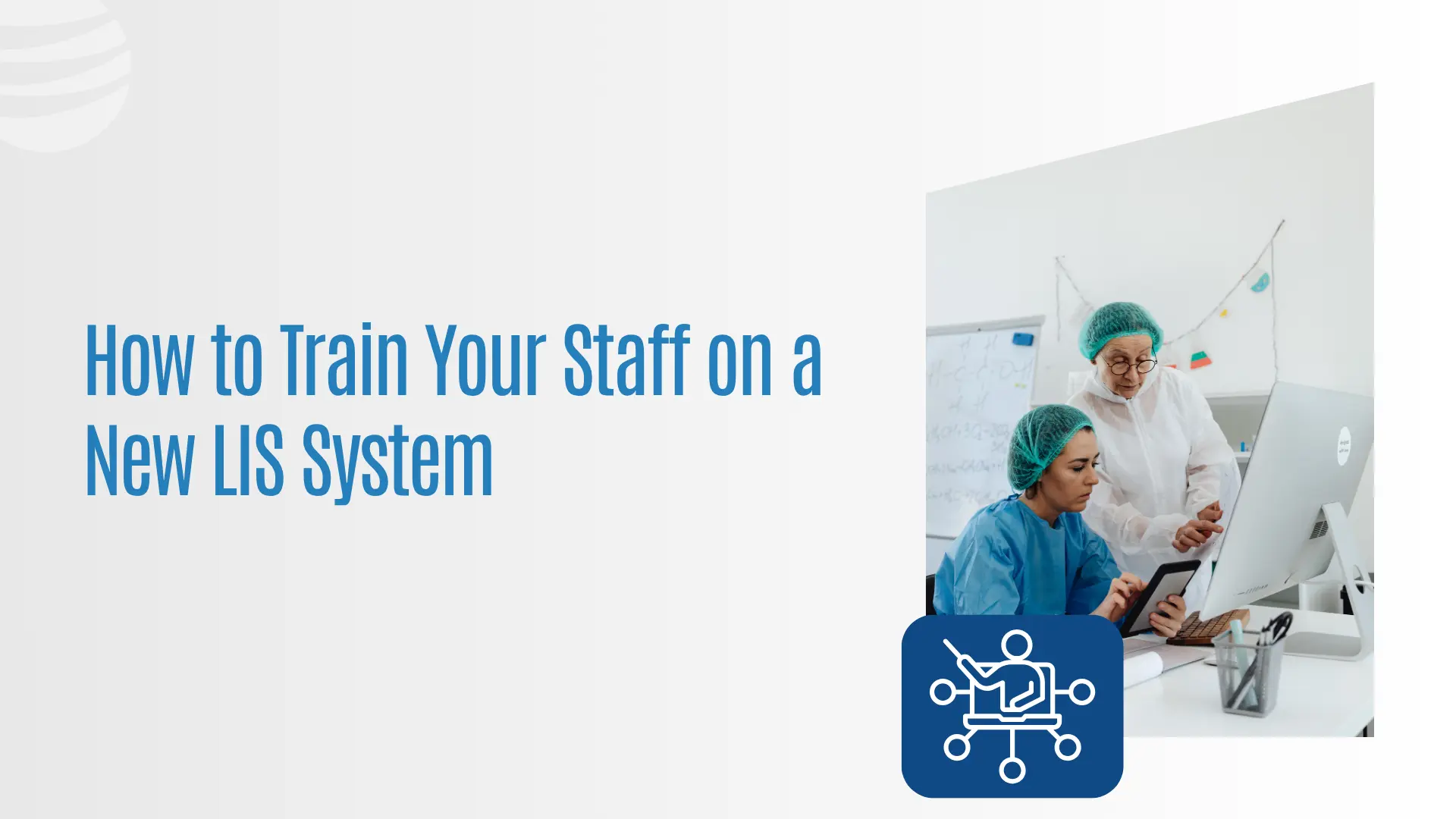ROI of Lab Automation: What Every Lab Manager Should Know
Introduction: Why ROI Matters in Laboratory Automation
For modern laboratories, the conversation around automation has moved beyond curiosity and into necessity. Increasing sample volumes, tighter margins, rising compliance costs, and a shortage of skilled laboratory professionals mean that labs can no longer rely on manual processes alone. Automation is now essential, but it brings a critical question for lab managers and executives: what is the return on investment (ROI)?
ROI in a laboratory setting is about more than dollars saved. It encompasses efficiency, error reduction, regulatory confidence, staff satisfaction, and scalability. At the heart of achieving ROI is the Laboratory Information System (LIS), the platform that connects instruments, workflows, billing, and reporting into a single ecosystem.
This blog explores the drivers of ROI in laboratory automation, common pitfalls of manual processes, and how Prolis LIS helps managers translate technology investment into measurable value.
Understanding ROI in the Laboratory Context
ROI Formula: ROI = (Net Gain from Investment ÷ Investment Cost) × 100
For laboratories, ROI must factor in:
- Increased throughput and test volume
- Reduced labor costs from manual tasks
- Lower error rates and fewer repeat tests
- Faster turnaround times improving provider satisfaction
- Compliance risk reduction
- Scalability for future growth
Unlike traditional ROI, laboratory ROI blends tangible financial metrics with clinical value.
The Hidden Costs of Manual Lab Processes
Labs that delay automation often underestimate the hidden costs of manual workflows. On paper, staffing appears to be the only expense, but in reality, inefficiencies multiply over time.
Labor Inefficiency
Laboratory technologists are highly trained, yet in manual workflows, they often spend hours on repetitive tasks such as data entry, label printing, or manually matching results to patients. These tasks drain time away from higher-value work such as analysis and quality control.
Human Error
Even the most diligent staff members make mistakes under pressure. Manual transcription errors such as entering the wrong patient ID, misreporting results, or mismatching samples can lead to repeat testing, regulatory complaints, and loss of provider trust.
Turnaround Delays
Every manual step adds time. From specimen accessioning to final reporting, delays compound when staff must physically move samples, type results, and route reports. Providers waiting on results may choose another lab that can deliver faster.
Compliance Risk
Auditors and inspectors demand complete, accurate records. Manual workflows often lack the timestamps, chain-of-custody tracking, or audit logs required for compliance. A single missing record can result in penalties or loss of accreditation.
Opportunity Cost
Without automation, labs cannot easily increase test volumes or add new clients. Growth is tied directly to staff expansion, which is both expensive and limited by the labor shortage.
In short, manual processes hide costs in inefficiency, errors, and lost opportunities. Automation brings these costs into the open by eliminating them.
Key Drivers of ROI in Lab Automation
1. Increased Productivity
The most immediate driver of ROI is productivity. Automated sample tracking, instrument integration, and reporting allow labs to process significantly more tests without adding staff. For example, an automated accessioning and LIS system can log hundreds of samples in minutes, compared to hours with manual entry.
Higher throughput means labs can handle growth or accept new clients without proportional staffing costs, driving ROI directly.
2. Enhanced Accuracy and Quality
Errors are expensive. A mislabeled sample or incorrect result can trigger repeat testing, provider complaints, and potential liability. Automation standardizes workflows, ensures barcoded tracking, and eliminates duplicate data entry.
By reducing errors, labs save the hidden costs of rework and build stronger trust with providers. This trust translates into retained and expanded business.
3. Improved Compliance and Reporting
Regulatory compliance is one of the highest risks in lab operations. Automation through an LIS ensures every process is logged with a timestamp, every result has a traceable history, and every audit trail is complete.
Instead of scrambling during inspections, labs with automation are audit-ready at all times. The financial ROI comes from reducing risk of fines, penalties, or accreditation delays.
4. Faster Turnaround Times
In today’s competitive lab market, turnaround time is a key differentiator. Automation enables faster workflows, from specimen accessioning to results reporting.
Faster results improve provider satisfaction, which translates into higher client retention and referrals. Turnaround time is not just an operational metric it is a driver of revenue growth.
5. Optimized Billing and Revenue Cycle
Billing is often overlooked in ROI discussions, but it is critical. Automated billing workflows through an LIS ensure clean claims, fewer denials, and faster reimbursements.
Every denied claim represents lost revenue and staff hours for resubmission. By integrating billing directly into the LIS, labs maximize cash flow, reduce denial rates, and strengthen financial ROI.
Measuring ROI Beyond Dollars
Financial ROI is important, but laboratories must also consider the intangible returns that drive long-term success.
- Staff Satisfaction: Automation reduces burnout by freeing staff from repetitive work. Happier employees stay longer, lowering turnover costs.
- Provider Retention: Providers choose labs that deliver accurate, timely results. Automation strengthens these relationships.
- Patient Outcomes: Faster, more reliable results improve patient care, which is the ultimate mission of any lab.
- Strategic Growth: Automation enables labs to expand into new specialties or handle larger volumes without constant reinvestment in staff.
ROI is not just a number, it is a long-term value equation.
Case Example: ROI in Practice
Consider a mid-sized molecular diagnostics lab that implemented Prolis LIS with automation features including sample barcoding, analyzer integration, and automated billing. Within the first year, the lab experienced measurable ROI:
- 30% reduction in labor hours spent on manual data entry
- 20% improvement in turnaround time for PCR results
- 15% reduction in claim denials, accelerating revenue flow
- Onboarding of two new provider networks without hiring additional staff
Financially, the lab achieved an ROI of over 150% in year one. Beyond the numbers, the lab gained scalability, compliance confidence, and stronger provider satisfaction.
Role of LIS in Maximizing ROI
Automation alone is not enough. Without an LIS, labs face fragmented workflows and partial gains. An LIS acts as the central hub that ties every automation effort together.
Key LIS features that maximize ROI include:
- Configurable workflows tailored to lab specialties
- Real-time quality control checks and audit logs
- Seamless analyzer and EMR integration
- Automated result reporting with flexible templates
- Built-in billing and revenue cycle management
By aligning automation with LIS functionality, labs move from isolated efficiency gains to full operational transformation.
Why Prolis Delivers ROI Faster
Prolis LIS was built with ROI in mind. It helps labs accelerate value realization through:
- Fast implementation timelines, reducing time-to-value
- Billing integration, ensuring clean claims and faster payments
- Flexible configuration, eliminating the need for costly customization
- Scalability, supporting long-term growth without reinvestment in systems
By combining workflow efficiency, compliance, and revenue optimization, Prolis helps labs achieve ROI not only in dollars, but also in trust, growth, and sustainability.
Conclusion: ROI as a Strategic Imperative
For lab managers, ROI is no longer a secondary concern. It is the lens through which every decision must be made. Automation delivers measurable returns in productivity, compliance, billing, and growth, but only when paired with a robust LIS that connects every part of the workflow.
The future belongs to labs that embrace automation not as a cost, but as a value engine. By investing in automation and LIS integration, managers ensure their labs are not just surviving, but thriving.
With Prolis, ROI becomes more than a financial metric. It becomes the foundation for sustainable success.




